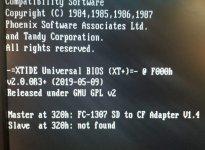VERAULT
Veteran Member
So in other words.. Sell this PS/2 to someone who likes PS2's? Shame I sold my compaq portable III already. I like the gas plasma Screen.. And its got a Cyrix 486 overdrive CPU in in. I was gonna run doom on Gas Plasma! Stupid MCA Bus.

